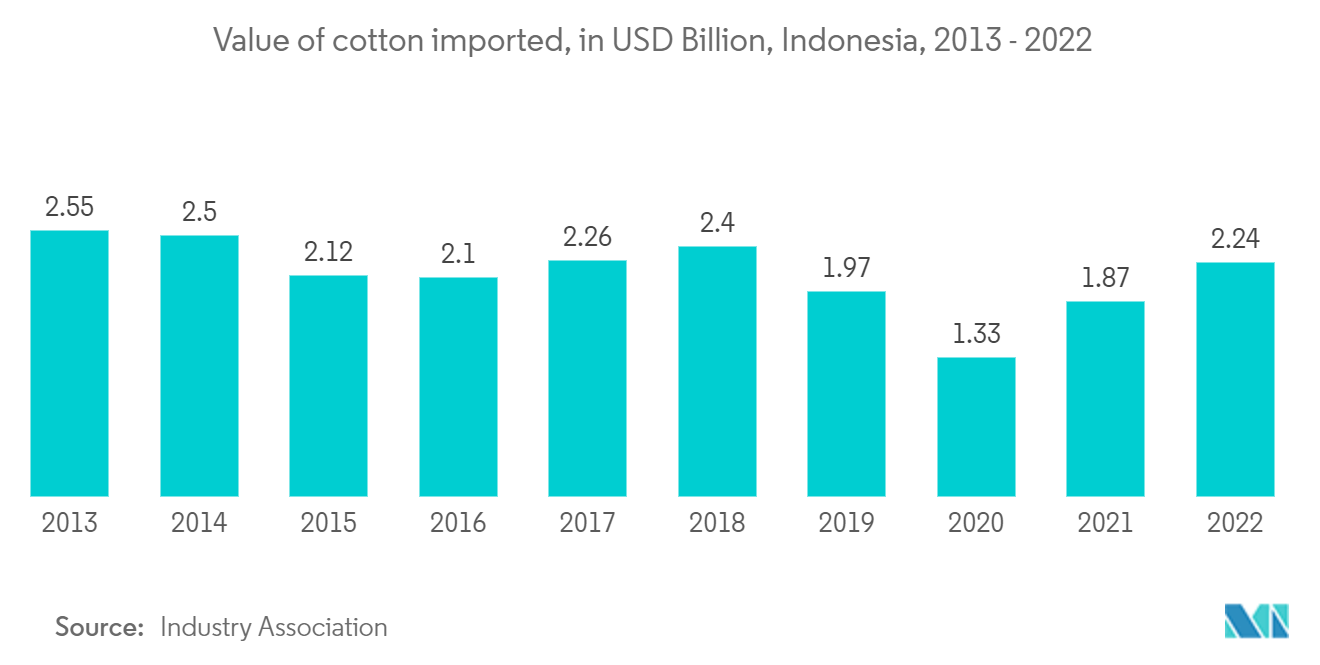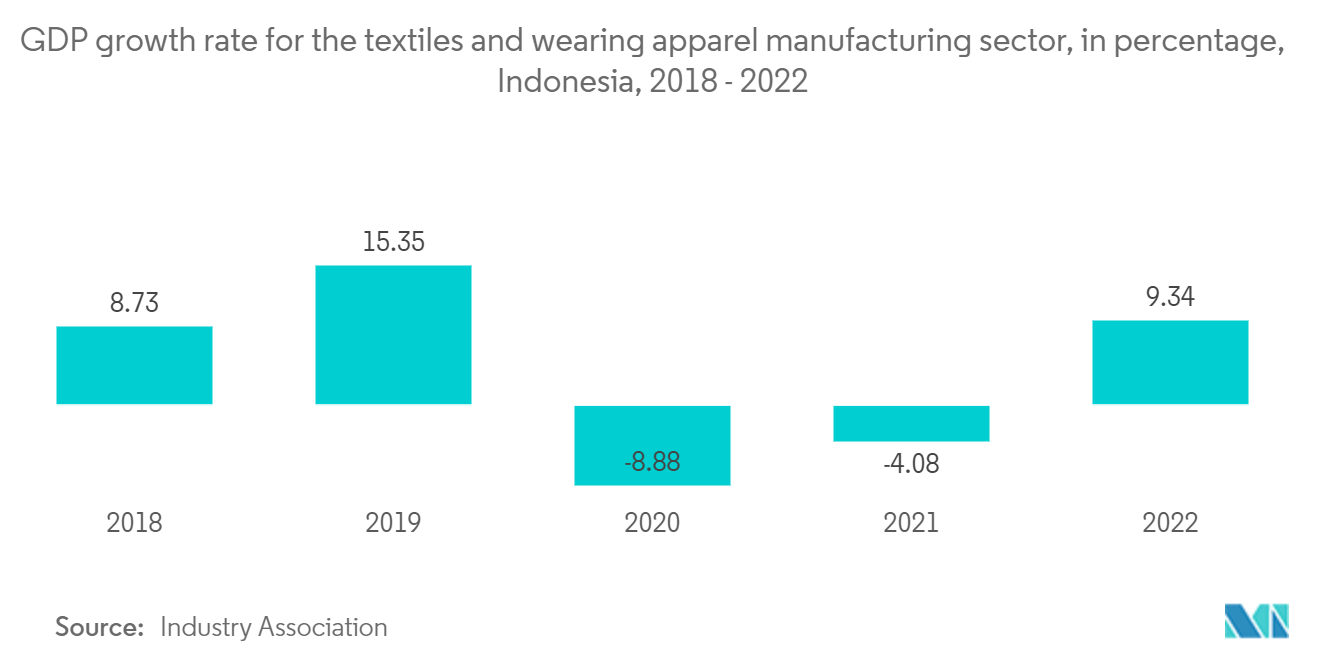Market Trends of Indonesia Textiles Industry
Indonesian Cotton Imports Set to Rise in 2024
• 2023/24 Indonesian cotton imports are projected to grow by about 5.9% to around 1.8 million bales, compared to 2022/23. This is based on the assumption that spinners will consume more inventory on hand before making new purchases, while global demand slows and tight competition from low-priced, illegal imports of clothing on the domestic market has resulted in lower cotton utilization, resulting in an increase in end stocks to 379.000 bales in 2023 / 24.
• The Indonesian manufacturing industry increased by 5.20% in the third quarter of 2023 (compared to 4.94% in the same three-month period last year), according to the latest data from the BPS (Badan Pusat Statistics Agency).
• However, the global economic conditions have not improved, leading to a decrease in demand from Indonesia's textile and textile product export destination countries, a decrease in consumer buying power, and fierce competition from illegal, low-priced imports into the domestic market. Furthermore, the appreciation of the rupiah has weakened the Indonesian currency against the US dollar, which has further dampened cotton imports. These gloomy conditions are expected to persist into 2024.
• Australia remained the biggest supplier of cotton to Indonesia, with 52.1 percent market share and 268,000 bale volume between August and October 2023. Brazil and the United States followed at 21.1 percent and 86,000 bale, respectively. The United States market share continues to decrease due to lower prices and Australia’s nearness.

Increasing sustainable practices in the market
Indonesia, renowned for its rich textile heritage and vibrant fashion scene, is witnessing a transformative shift toward sustainability. Building on its traditional textile artistry, especially the iconic batik, Indonesia's fashion industry is now embracing sustainability.
Designers increasingly turn to organic cotton, bamboo fabric, and recycled materials, seamlessly blending them with traditional techniques. This fusion results in unique, environmentally conscious fashion pieces.
Rising consumer awareness about fashion's environmental and social impact is fueling demand for ethically produced clothing. Indonesian designers and brands are responding by adopting fair trade practices, ensuring fair treatment of workers throughout the supply chain. This ethical shift also aligns with global sustainability standards.
Collaborations with local artisans are gaining momentum, empowering traditional craftsmen and women. These partnerships not only preserve cultural heritage but also foster sustainable livelihoods. The concept of circular fashion, emphasizing longevity and recycling, is gaining traction. This approach minimizes waste and contributes to a more sustainable industry.
Indonesia is also embracing technology, such as 3D printing and innovative fabric development, to further enhance sustainability in its fashion industry. These efforts are gaining global recognition, positioning Indonesia as a leading force in the green fashion movement.
In summary, Indonesia's fashion industry is undergoing a remarkable sustainability transformation. From embracing eco-friendly materials to championing fair trade, the nation's fashion landscape is evolving, proving that style and sustainability can indeed go hand in hand. As consumer demand for responsible choices rises, Indonesian fashion designers are spearheading a greener, more ethical future for the industry.


